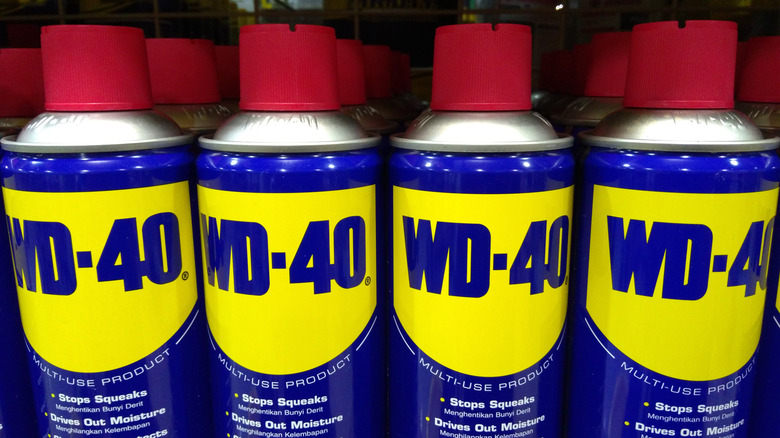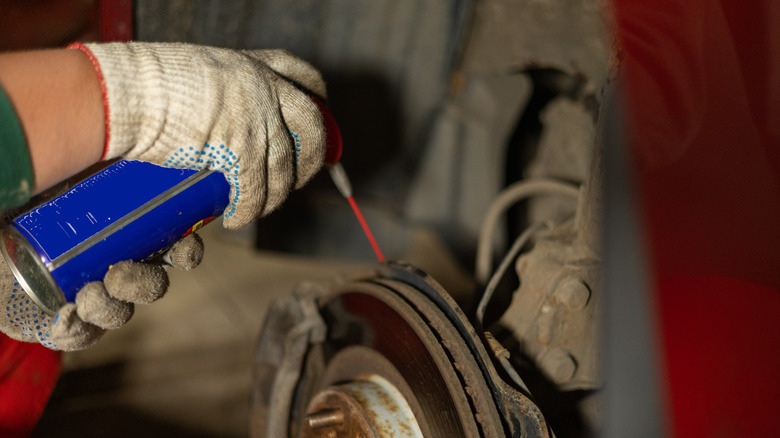Is WD-40 Flammable? What You Need To Know
WD-40 is a go-to solution when it comes to lubrication or rust prevention. It's been so commonly used for so long that it forms half of the old semi-serious DIY joke: "If it moves and it shouldn't, duct tape; if it doesn't move and it should, WD-40." And there is a huge range of WD-40 uses and hacks you probably didn't know about.
When it comes to safety, one of the biggest concerns is whether WD-40 is flammable, and what precautions you should take when using it. The substance is a mixture of oils and solvents under pressure in an aerosol canister, and this WD-40 safety date sheet PDF describes it as an "Extremely Flammable Aerosol" — which basically means it comes in a spray can and catches fire easily. The document also notes that it "may explode if heated."
So, just how dangerous is it? What can you do to prevent WD-40 fires, and what should you do if it all goes wrong? Read on to find out.
How to avoid a WD40 fire
Both the liquid itself and the storage method contribute to WD-40's flammability, but there are some basic safety steps you can follow to minimize the risk of a fire breaking out.
The company's advice is to keep the solvent "away from heat, sparks, pilot lights, hot surfaces and open flames." So before you introduce a can of WD-40 to an area, or start spraying something with it, have a quick look around for potential hot spots or ignition sources. Pilot lights are a good example. If you're working near a water heater, the pilot light may not be visible, and you could forget that there's a flame burning in your vicinity.
Electricity may also pose a problem, with the safety sheet suggesting that you "unplug electrical tools, motors and appliances before spraying or bringing the can near any source of electricity." This is because, "electricity can burn a hole in the can and cause contents to burst into flames." This is important to keep in mind when using WD-40 to maintain power tools. Possible causes suggested by the sheet include battery terminals, which will short on the can's surface, quickly heating that spot up, and electrical connections on motors or appliances. Essentially, you shouldn't be spraying WD-40 on or near any live source of electricity.
How to extinguish a WD-40 fire
If a WD-40 fire does break out, you should know how to handle it. Water fog, dry chemical, carbon dioxide, and foam fire extinguishers are the best options to put out a WD-40 fire. You shouldn't use a water jet fire extinguisher, as WD-40 is oil-based and will float to the surface — causing the fire to spread further, faster, and could make it unmanageable. You shouldn't use water buckets or fire hoses either.
It's also worth noting that WD-40 vapor is heavier than air and can travel along surfaces or the ground to a remote ignition source. If you're using a lot of WD-40, this could result in a fire starting somewhere initially out of sight. That fire could "flash back" and ignite the area you're currently working on. Gasses and vapors can also pool and become trapped in a low-point of your working area. The flammable gas may sit there unnoticed for a long time and catch a random spark or other ignition source down the line. For this reason, it's important to know your work space, ensure it's well ventilated, and deal with any areas where heavier than air gases may pool.


